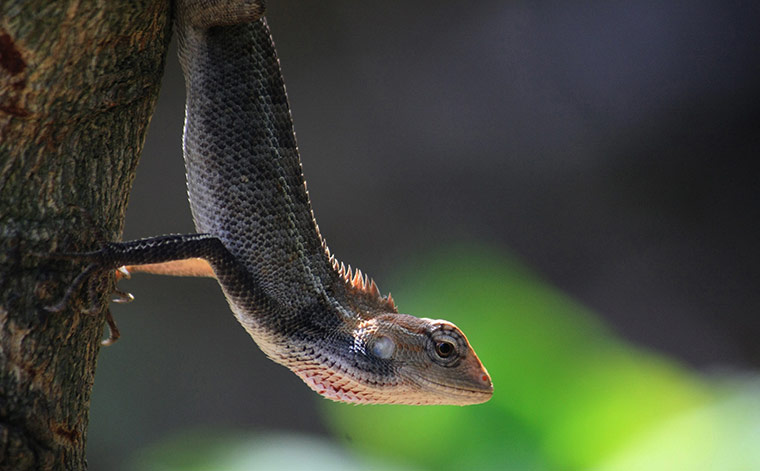TOP STORIES
Fungus strikes but doesn't kill European bats
This suggests that Geomyces destructans, the fungus responsible, has been in Europe a long time, says biologist Sébastien Puechmaille of University College Dublin. “And when I say a long time, I mean thousands — if not tens of thousands — of years,” he says. “Our bats have likely coevolved with this fungus.”
White-nose syndrome first appeared four years ago in a hibernating colony of bats in New York state. Since then, it has wiped out an estimated million more at winter roosting sites across eastern Canada and the eastern United States. Tentative sightings — ones not confirmed by genetic analyses — turned up last year as far west as Missouri and Oklahoma, notes wildlife pathologist Carol Meteyer of the U.S. Geological Survey’s National Wildlife Health Center in Madison, Wis.
ScienceNews - www.sciencenews.org
06 May 2011
J Raloff
>>>FULL ARTICLE
Cited Journal Article
S.J. Puechmaille, et al. 2011 Pan-European Distribution of White-Nose Syndrome Fungus (Geomyces destructans) Not Associated with Mass Mortality. PLoS ONE 6(4): e19167. doi:10.1371/journal.pone.0019167
Other White-nose Syndrome News
Disease Decimates Bat Colonies
06 May 2011
J Raloff
>>>FULL ARTICLE
Cited Journal Article
S.J. Puechmaille, et al. 2011 Pan-European Distribution of White-Nose Syndrome Fungus (Geomyces destructans) Not Associated with Mass Mortality. PLoS ONE 6(4): e19167. doi:10.1371/journal.pone.0019167
Other White-nose Syndrome News
Disease Decimates Bat Colonies
16 Whales Mysteriously Stranded in Florida Keys
It's not yet clear why more than 16 pilot whales became stranded in the lower Florida Keys on Thursday, but the list of possible reasons is long -- and includes the whales' social nature.
Pilot whales live in groups called pods that consist of between 15 and 50 animals, and mass strandings like this one have happened before. Most recently, in 2003, about 25 pilot whales became stranded in the Keys, according to Anne Biddle, media relations director for the Marine Mammal Institute, which is responding to the stranding.
"They tend to strand in pods, they stick together, if one is sick, the whole pod is going to strand," Biddle told LiveScience. The whales are stranded in shallow water, and veterinarians are assessing them to determine if all or a couple are sick, she said.
There are many potential causes -- including diseases, parasites, loud noise, toxins or simple confusion -- so figuring out what is responsible for the mass stranding can be challenging, according to Chris Parsons, a professor at George Mason University who has tracked mass whale strandings around the world.
Livescience - www.livescience.com
06 May 2011
W Perry
Location: Florida Keys, Florida, USA - Map It
>>>FULL ARTICLE
06 May 2011
W Perry
Location: Florida Keys, Florida, USA - Map It

>>>FULL ARTICLE
Fish in Lake DuBay Found Dead of Virus
Thousands of black crappies on Lake DuBay and the Stevens Point Flowage are dead of a virus and wildlife officials are trying to figure out why the disease is affecting just one species. Wisconsin Department of Natural Resources biologists and fisheries technicians learned of the fish kill April 25 and determined that the cause appears to be a virus primarily affecting 3-year-old black crappies.
"(If it was a widespread problem) other fish would be dying," DNR fisheries biologist Tom Meronek said. "This is just limited to crappies. We've seen cases on other bodies of water (in Wisconsin). This might be a similar virus."
The symptoms are not consistent with viral hemorrhagic septicemia, or VHS, a virus that has sickened or killed large numbers of fish in the Great Lakes, according to the DNR. Wisconsin has mandated in recent years that all water must be drained from boats to prevent the spread of VHS and other viruses and diseases.
Wausau Daily Herald - www.wausaudailyherald.com
06 May 2011
J Storck
Location: Stevens Point, Wisconsin, USA - Map It
>>>FULL ARTICLE
Related Article
DNR investigates large fish kill in Lake DuBay
06 May 2011
J Storck
Location: Stevens Point, Wisconsin, USA - Map It

>>>FULL ARTICLE
Related Article
DNR investigates large fish kill in Lake DuBay
Upstream Battle: What is Killing Off the Fraser River's Sockeye Salmon?
 Gridlocked bridges over the Fraser River are just a part of life for commuting Vancouverites. But the industrialized motif of North America's longest dam-free river belies a rare natural treasure: a sockeye salmon run with a historical average of eight million fish worth over $1 billion. Since the early 1990s the numbers of Fraser sockeye have steadily dwindled, reaching a particularly troublesome nadir in 2009 when more than 11 million sockeye were forecast to return and only 1.4 million showed up. Since the mid-1990s, something began killing large numbers of returning sockeye on the Fraser—anywhere from 40 to 95 percent of fish in some years—before they could spawn.
Gridlocked bridges over the Fraser River are just a part of life for commuting Vancouverites. But the industrialized motif of North America's longest dam-free river belies a rare natural treasure: a sockeye salmon run with a historical average of eight million fish worth over $1 billion. Since the early 1990s the numbers of Fraser sockeye have steadily dwindled, reaching a particularly troublesome nadir in 2009 when more than 11 million sockeye were forecast to return and only 1.4 million showed up. Since the mid-1990s, something began killing large numbers of returning sockeye on the Fraser—anywhere from 40 to 95 percent of fish in some years—before they could spawn.Now a study bolsters the hypothesis that a mysterious pathogen working in concert with other anthropogenic stressors may be the culprit.
Led by Fisheries and Oceans Canada, a team of scientists tracked returning Fraser River sockeye to see whether the genetic activity of those that successfully spawned differed from the activity of those that perished prematurely en route.
OTHER WILDLIFE HEALTH RELATED NEWS
Photo courtesy of The Guardian - Week in Wildlife





